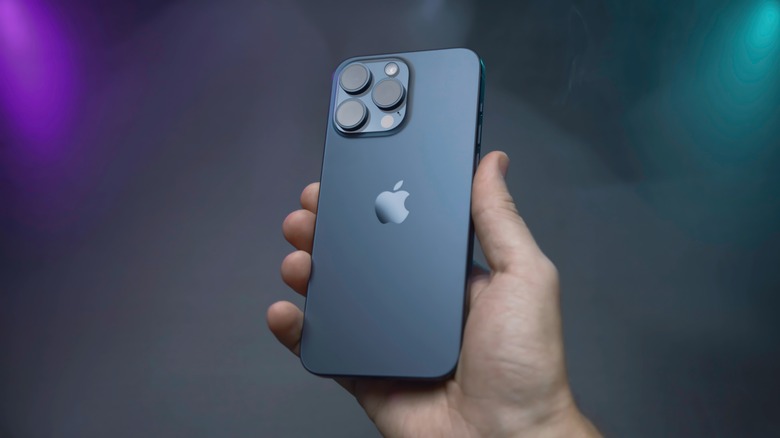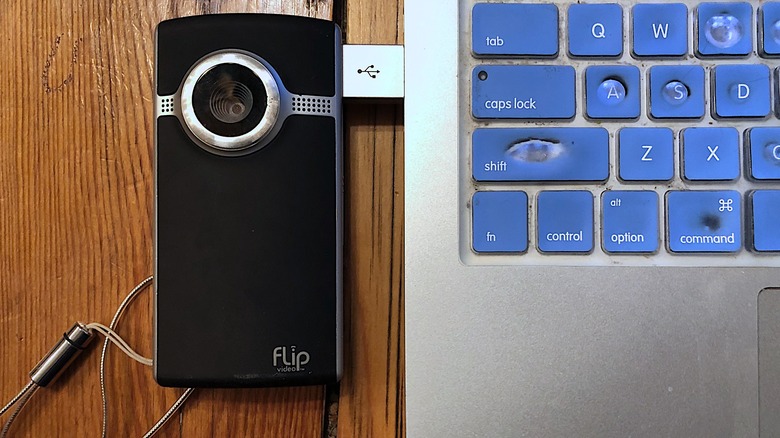Why Were Flip Video Cameras Discontinued?
Over the decades, you have seen people use Super 8 cameras, VHS camcorders, mini-DV tapes, DSLRs, and more to capture vacations, birthdays, or just mundane bits of daily life. Plus, burgeoning filmmakers utilize these tools to create amateur films to either show friends and family or post online. However, all of these cameras were rather large and were sometimes a burden for the average person to pull out and use at a moment's notice. Well, in the mid-2000s, Pure Digital Technologies looked like it fill that need with the creation of the Flip Video camera that could easily fit inside a person's pocket.
When they first hit the market, they were everywhere, but their time in the sun was quite short, ceasing production in 2011. That means it only was available for purchase for just five years. Although it seemed like it could be the future of personal videography, that ended up not being the case. The question then becomes why did Flip Video ultimately fail. Its demise comes at the hands of corporate acquisitions, evolving technology, and a market for it that shrunk dramatically when an alternative option made itself far more desirable. The Flip Video camera did hit at the exact right moment, but its window of relevance was always going to be short-lived.
[Featured image by Phil Roeder via Wikimedia Commons | Cropped and scaled | CC BY 2.0]
The abrupt end of the Flip Video camera
The Flip Video camera was introduced in 2007, but it wasn't the only major device on the market. Just a couple of months before the Flip Video Ultra was available, Apple debuted the iPhone. While it seems preposterous now, the original iPhone did not have the ability to capture video, just photos. If people wanted that easily accessible pocket video camera, they couldn't just rely on their cellphone quite yet. Video for the iPhone would not become a reality until the 3GS, which would come out in 2009. That meant the Flip Video camera got to have a two year run without any serious competition in the pocket video space.
2009 was also the year that Pure Digital Technologies was able to sell to Cisco for $590 million. Two years later, the new parent company pulled the plug on Flip Video. Sales were still reportedly strong, but that didn't mean Cisco didn't see the writing on the wall. Phones were already hurting the still photography camera market, so it makes sense that video was next. There is also the fact that Cisco does not really sell hardware products. It is in the business of software and services for things like network security. Selling a pocket camcorder really has nothing to do with the rest of what that company does, which rarely deals in direct-to-consumer products.
Once we had smartphones that could also record video at an equal or higher quality, there was really no reason to have a separate Flip Video camera. It had it's moment.
Why did the Flip Video camera become popular in the first place?
Even though it only lasted four years, the Flip Video camera could not have arrived a better time. Importantly, in December of 2005, YouTube was created. There had been Internet video prior to YouTube, but there hadn't been an easier way to upload and share your videos, be they sketches, short films, or home videos. In 2007, "Chocolate Rain" gets uploaded to platform in April, and "Charlie Bit My Finger" hits one month later. YouTube entered the mainstream, and people wanted in on the action.
Flip Video cameras weren't exactly cheap, but compared to large camcorders, they seemed like a bargain. Their ease of use also made them appealing to people of all ages. YouTube could only support short videos in standard definition at the time, so the limited storage space and maximum resolution of 720p weren't a hinderance. Plus, its built-in USB connector meant you could get your video online as quickly as possible.
When smartphones with video came around, it made the process of uploading to YouTube even simpler. At a certain point, you could do it straight from the phone, eliminating the need for one of the Flip Video camera's most desirable features. These pocket cameras fell victim to device consolidation, convenience, and a parent company seeing there was no way to get back into the market it lost. Flip Video had its purpose, but by the time it ended, it couldn't serve that purpose better than a smartphone.
[Featured image by Alan Levine via Wikimedia Commons | Cropped and scaled | CC0 1.0]


